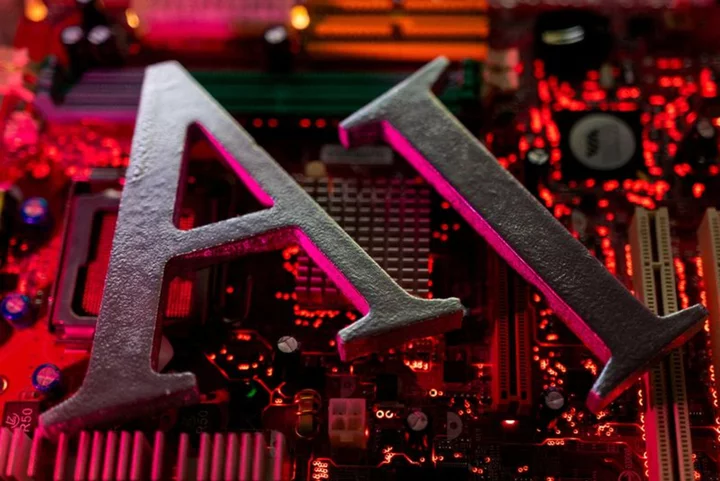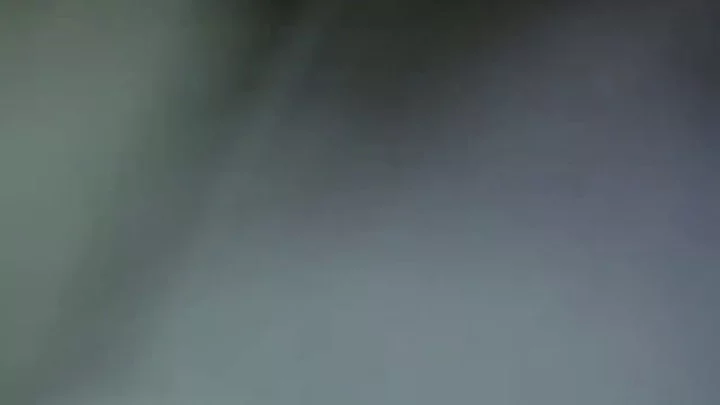
Robotic dog brought into survey historic Cold War weapons testing facilities
A robotic dog called Spot was brought into survey two former Cold War weapons testing facilities, which are unsafe for humans to enter due to decaying concrete. The National Trust said bringing the tech to Orford Ness in Suffolk to conduct a first measured survey of the historic structures was “a key part of our commitment to ongoing research at our places”. The remote shingle spit was used as a military test site during both world wars and into the nuclear age, before the Ministry of Defence sold it to the conservation charity in 1993. The robotic dog, with a camera mounted to the top and four hinged legs, is controlled remotely and from a safe distance to explore spaces where it is unsafe for humans to go. It was used, alongside drones, to survey two laboratories known as pagodas or Labs 4 and 5 at Orford Ness. Both are classified as scheduled monuments. They were constructed in 1960 to carry out environmental tests on the atomic bomb, mimicking the rigours to which a weapon might be subjected before detonation, including vibration, extremes of temperature, shocks and G forces. Although no nuclear material was involved, a test failure could still have resulted in a catastrophic explosion. For this reason, the labs were specially designed and constructed with a shingle top which would absorb and dissipate if an explosion occurred. Glen Pearce, operations manager at the National Trust’s Orford Ness, said: “This is a really exciting opportunity for us to see inside labs four and five, the ‘pagodas’. “The buildings have always had a certain mystery about them. “When they were built and in use during the Cold War, they were shrouded in secrecy, and after they were decommissioned, they fell into disrepair. “Nobody has been able to go inside for several years due to safety reasons. “This is the first time the National Trust has employed this kind of technology and it’s a key part of our commitment to ongoing research at our places. “It could change the way we, and our visitors, engage with the structures at Orford Ness as well as other scheduled monuments and buildings deemed unsafe to enter.” No measured surveys have been completed of the buildings before, the conservation charity said. National Trust archaeologist Angus Wainwright said: “Historic England’s research into the buildings made us realise how significant they are, on a national and international scale. “These are some of the few Cold War buildings that are on this monumental scale and visitable by the public. “The buildings used to be quite safe so we could go in and out as much as we liked, but now they are getting more risky as the concrete decays. “That’s why we are doing this survey in this remote way, without anyone going into the buildings. “It’s all very experimental, to see if it’s possible to do a really detailed building survey with no human operator in the building.” The structures are part of the National Trust’s curated decay policy and have been left to nature, with their roofs becoming nesting sites for lesser black-backed gulls, which are on the UK’s amber conservation list. Colin Evison, innovation technical lead at BAM, said it was a “fantastic opportunity to put into action our agile mobile robot Spot”. He said the survey would provide a “comprehensive and valuable record of this historic environment for future generations”. Read More Charity boss speaks out over ‘traumatic’ encounter with royal aide Ukraine war’s heaviest fight rages in east - follow live Period and fertility tracking apps scrutinised over data security concerns Russian cyber-attacks ‘relentless’ as threat of WW3 grows, expert warns Warner Music sign first digital character Noonoouri and release debut single
2023-09-08 15:21

Philips to Pay at Least $479 Million For Apnea Machine Cases
Koninklijke Philips NA officials have agreed to pay at least $479 million to resolve part of a sprawling
2023-09-07 20:50

Massive bubble of galaxies could be ‘fossil of the Big Bang’, say scientists
A huge bubble of galaxies that is one billion lightyears across could be a remnant of the ripples caused by the Big Bang, according to astronomers who have mapped the structure. The structure, named Hoʻoleilana by University of Hawaii scientists, is thought to have been caused by so-called Baryon Acoustic Oscillations (BAOs). These were ripples in the particles of the early Universe in the period following the Big Bang, when planets, solar systems and galaxies were not yet fully formed. As the ripples went outward, they created areas of density in the particles, causing bubble-like structures in which galaxies eventually coalesced. Until now, the BAOs were just a prediction – part of the wider Big Bang theory. No specific structures in the Universe had been found which mimicked their patterns. But Hoʻoleilana fits the description of these huge cosmic bubbles perfectly, according to Brent Tully, who led the study at the University of Hawaii’s Institute for Astronomy. “We were not looking for it. It is so huge that it spills to the edges of the sector of the sky that we were analyzing,” he said. “As an enhancement in the density of galaxies it is a much stronger feature than expected. The very large diameter of 1bn light years is beyond theoretical expectations. “If its formation and evolution are in accordance with theory, this BAO is closer than anticipated, implying a high value for the expansion rate of the universe.” The bubble is absolutely huge. It is made up of several superclusters, structures which themselves are thought to be among the Universe’s largest arrangements of matter. This includes the Hercules Supercluster, the Corona Borealis Supercluster and the Sloan Great Wall. All of these structures contain thousands of galaxies. In the middle of Hoʻoleilana sits the Bootes Supercluster and the Bootes Void, an immense space of nothingness which is an incredible 330m lightyears across. Daniel Pomarede, from the CEA Paris-Saclay University, who contributed to the research, said: “It was an amazing process to construct this map and see how the giant shell structure of Ho’oleilana is composed of elements that were identified in the past as being themselves some of the largest structures of the universe.” The research was published on 5 September in The Astrophysical Journal. Sign up to our free Indy100 weekly newsletter Have your say in our news democracy. Click the upvote icon at the top of the page to help raise this article through the indy100 rankings.
2023-09-07 20:00

India’s Moon lander just detected movement below the lunar surface
India’s Vikram lunar lander has recorded movement below the surface of the Moon – but it’s probably not aliens. Experts think the movement is seismic activity – the lunar equivalent of earthquakes. It is the first time humans have detected the so-called moonquakes since the 1970s. The new activity was recorded by the Vikram lander’s onboard instrument for lunar seismic activity, a piece of kit designed “to measure ground vibrations generated by natural quakes, impacts, and artificial events,” the Indian Space Research Organization (ISRO) said. India’s Chandrayaan-3 mission saw it land the Vikram and its sister craft, the Pragyan rover, last month, becoming the first nation to land near the Moon’s little-explored South Pole. It also makes India just the fourth nation to land on the Moon, alongside the US, the former USSR and China. The seismic activity is the first recorded since the US Apollo programme, which ended in 1977. Those recordings yielded valuable data about the Moon’s makeup. Scientists have been able to theorise that the Moon has an inner core which is much less dense than the Earth’s and which is about 500km across. On Earth, seismic activity is caused by the shifting of the planet’s tectonic plates. But on the Moon, things are a bit different. The quake could be caused by thermal activity from the Sun, or by tidal stresses caused by Earth’s gravity, cracking the planet and causing the pieces to rub together. The team noted that the event is currently under investigation. Sign up to our free Indy100 weekly newsletter Have your say in our news democracy. Click the upvote icon at the top of the page to help raise this article through the indy100 rankings.
2023-09-07 19:20

Generation AI: education reluctantly embraces the bots
By Barbara Lewis and Supantha Mukherjee LONDON/STOCKHOLM At leading Swedish university Lund, teachers decide which students can use
2023-09-07 16:50

AI can help generate synthetic viruses and spark pandemics, warns former Google executive
Synthetic viruses could be generated through the misuse of artificial intelligence and potentially spark pandemics, a former Google executive and AI expert has warned. Google DeepMind co-founder Mustafa Suleyman expressed concern that the use of AI to engineer pathogens to cause more harm may lead to a scenario like a pandemic. “The darkest scenario is that people will experiment with pathogens, engineered synthetic pathogens that might end up accidentally or intentionally being more transmissible or more lethal,” he said in a recent episode of a podcast. Similar to how there are restrictions in place to prevent people from easily accessing pathogenic microbes like anthrax, Mr Suleyman has called for the means to restrict access to advanced AI technology and software that runs such models. “That’s where we need containment. We have to limit access to the tools and the know-how to carry out that kind of experimentation,” he said in The Diary of a CEO podcast. “We can’t let just anyone have access to them. We need to limit who can use the AI software, the cloud systems, and even some of the biological material,” the Google DeepMind co-founder said. “And of course on the biology side it means restricting access to some of the substances,” he said, adding that AI development needs to be approached with a “precautionary principle”. Mr Suleyman’s statements echo concerns raised in a recent study that even undergraduates with no relevant background in biology can detail suggestions for bio-weapons from AI systems. Researchers, including those from the Massachusetts Institute of Technology, found chatbots can suggest “four potential pandemic pathogens” within an hour and explain how they can be generated from synthetic DNA. The research found chatbots also “supplied the names of DNA synthesis companies unlikely to screen orders, identified detailed protocols and how to troubleshoot them, and recommended that anyone lacking the skills to perform reverse genetics engage a core facility or contract research organization”. Such large language models (LLMs), like ChatGPT, “will make pandemic-class agents widely accessible as soon as they are credibly identified, even to people with little or no laboratory training,” the study said. The study, whose authors included MIT bio risk expert Kevin Esvelt, called for “non-proliferation measures”. Such measures could include “pre-release evaluations of LLMs by third parties, curating training datasets to remove harmful concepts, and verifiably screening all DNA generated by synthesis providers or used by contract research organizations and robotic ‘cloud laboratories’ to engineer organisms or viruses”. Read More China’s ‘government-approved’ AI chatbot says Taiwan invasion is likely Government urged to address AI ‘risks’ to avoid ‘spooking’ public Scientists give verdict on Harvard professor’s claim of finding materials in sea from outside Solar System Google boss says he wants to make people ‘shrug’ Why is Elon Musk obsessed with the letter X? Elon Musk ‘borrowed $1bn from SpaceX’ at same time as Twitter acquisition
2023-09-07 15:46

Japanese Rocket Takes Off for Moon After Troublesome Year
A Japanese rocket bound for the moon took off early Thursday, offering relief to a battered national space
2023-09-07 11:45

Scientists confused after black holes 'burp up' previously destroyed stars
It feels like every time black holes are discussed and studied by the scientific community, there are new findings that blow our tiny minds. It’s been revealed that black holes actually regurgitate or “burp up” the stars that they eat years after the event. Experts made the discovery by studying tidal disruption events (TDEs). These events take place when stars are close enough to supermassive black holes, to be destroyed by the process of spaghettification. Studying these moments over a number of years after the black holes seemingly swallowing stars with no trace, the experts found that up to 50 per cent of them "burp up" the remains. Yvette Cendes is a research associate at the Havard and Smithsonian Center for Astrophysics and head author on the study. Speaking to Live Science, she said: "If you look years later, a very, very large fraction of these black holes that don’t have radio emission at these early times will actually suddenly 'turn on' in radio waves. "I call it a 'burp' because we’re having some sort of delay where this material is not coming out of the accretion disk until much later than people were anticipating." The material was re-emitted between two and six years from 10 out of 24 black holes which were studied by Cendes and the team. It has the potential to change the way the scientific community thinks about black holes. "There was a second peak, the two black holes re-brightened, and that's completely new and unexpected," Cendes said. "People were thinking that you'd have one outflow, and then it's kind of done. So this observation means these black holes can 'turn on' and then 'turn on' again." Meanwhile, a low intergalactic grumbling is emanating from deep space, according to scientists – and again, it’s black holes that are providing us with new discoveries. Astronomers say they detected the first-of-their-kind low frequency ripples, described as a “cosmic bass note” of gravitational waves, which is thought to be caused by supermassive black holes merging across the universe. Sign up for our free Indy100 weekly newsletter Have your say in our news democracy. Click the upvote icon at the top of the page to help raise this article through the indy100 rankings
2023-09-07 00:21

The Iconic Concorde Airplane Is Getting the LEGO Treatment
LEGO’s Concorde plane is as sleek as its real-life counterpart.
2023-09-06 21:45

Frozen humans could be brought back to life in next 50 years claims expert
Experts may have found a way to resurrect frozen humans in 50 to 70 years. It comes after a cryonics company was able to revive an extinct worm from 46,000 years ago, leading them to believe the method could be applied to humans. "Cryonics is a scientifically based, legal technology for preserving humans and animals in a state of deep cooling in the hope that in the future they will be resuscitated and, if necessary, cured and rejuvenated," Russian cryogenics company KrioRus explained. "For legal reasons, human cryopreservation can be carried out only after legal death." KrioRus shared how the dead patient is "immersed into a low-temperature medium where almost all chemical reactions are stopped." The first ever cryopatient, American professor James Bedford, has been preserved for almost 50 years "with no sign of change or deterioration." "In the prognosis of modern science, a cryopatient can indeed be someday revived and return to life," they said. Many more people have opted to freeze their deceased pets, with costs dependent on pet size, species and distance to the facility among other factors. A dog is said to cost around $25,000. The company claims to have cryopreserved 92 people but disclaimed that for humans to be resurrected, there must be significant progress in the medical field. "Cryobiological laboratories are few, there are no large ones at all," CEO Valeriya Udalova told MailOnline. "Even the famous laboratory 'XXI Century Medicine' is a small organization." She continued: "But even in such a deplorable situation, remarkable experiments have already been made, for example, on reversible cryopreservation of a rat kidney using gas persufflation with nanoparticles and induction heating." Sign up for our free Indy100 weekly newsletter Have your say in our news democracy. Click the upvote icon at the top of the page to help raise this article through the indy100 rankings.
2023-09-06 21:15

'It's got a cockerel on it': Robbie Williams gets Tottenham shirt gift after Angels chant adaptation
Robbie Williams and his family have been gifted with Tottenham Hotspur shirts after he performed an adaptation of his hit song 'Angels' in honour of the club's manager Ange Postecoglou that has taken off on the terraces.
2023-09-06 20:19

China Considers Law Banning Clothes That ‘Hurt Feelings’ of Others
China’s public is expressing concern about a potential legal change that would allow for fines and even jail
2023-09-06 14:55
